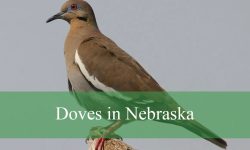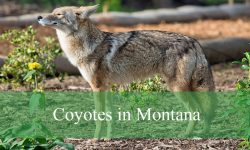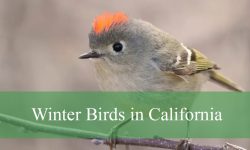Michigan’s vast forests, wetlands, and farmlands are home to an impressive range of wildlife, including several majestic members of the deer family. When people think of deer in Michigan, the white-tailed deer usually comes to mind. However, the state is also home to two other iconic species that belong to the same family — elk and moose.
These three species together form the complete representation of Michigan’s native deer population. Each has distinct traits, behaviors, and habitats, making them fascinating to observe and study.
This guide explores each type of deer found in Michigan, along with identification tips, habitat information, and where you can spot them in the wild.
White-tailed Deer (Odocoileus virginianus)
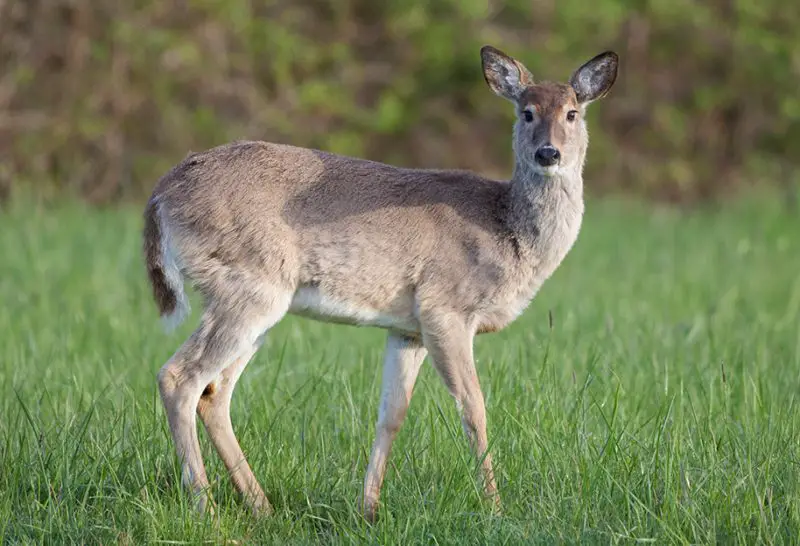
Identification and Appearance
The white-tailed deer is the most common and well-known species in Michigan. It is easily recognized by the white underside of its tail, which it raises like a flag when alarmed. Adult males, or bucks, typically weigh between 150 and 300 pounds, while females, or does, are lighter at 90 to 200 pounds.
During summer, their coat is a rich reddish-brown that helps them blend with the forest foliage. In winter, the coat turns grayish-brown for better camouflage in snowy landscapes. Bucks grow new antlers each year, shedding them in late winter after the breeding season. The size and number of antler points depend on the deer’s age, health, and nutrition.
Habitat and Range in Michigan
White-tailed deer inhabit every county across both the Lower and Upper Peninsulas of Michigan. They thrive in a variety of environments, from dense forests and wetlands to farmlands and suburban neighborhoods.
In winter, they often gather in areas known as “deer yards” — sheltered places with thick conifer cover that protect them from wind and deep snow. They adapt their movements with the seasons, seeking food-rich farmlands in summer and forest cover in colder months.
Behavior and Diet
White-tailed deer are crepuscular, meaning they are most active during dawn and dusk. Their diet is diverse and changes seasonally. In spring and summer, they eat green plants, fruits, and crops like soybeans and alfalfa. In autumn, acorns and nuts are favorites. During winter, they survive on twigs, bark, and buds.
These deer play a key ecological role as herbivores, but when their population grows too dense, they can overbrowse forests and damage crops. Michigan’s Department of Natural Resources (DNR) regulates hunting seasons to maintain a healthy balance between deer and their habitat.
Elk (Cervus canadensis)
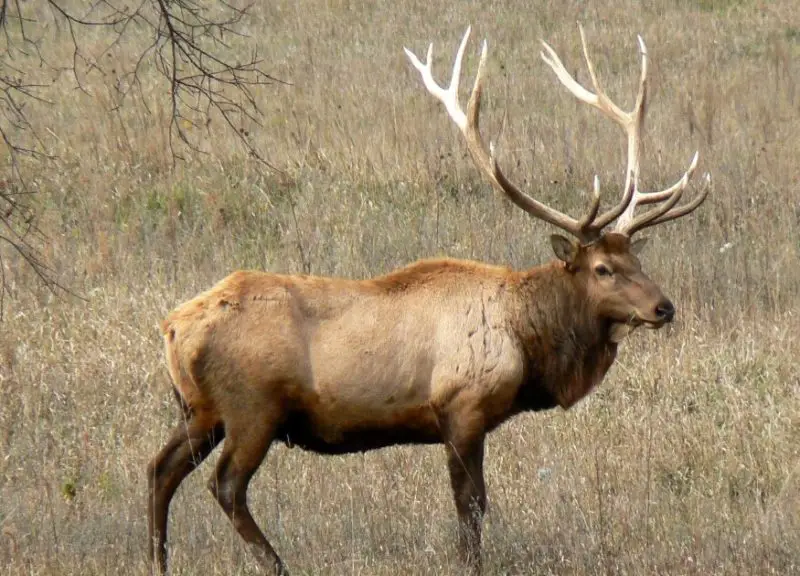
Identification and Appearance
Elk are the second-largest members of the deer family in North America and one of Michigan’s most impressive wildlife species. Adult males, called bulls, can weigh between 600 and 900 pounds, while females, or cows, usually range from 400 to 600 pounds.
Elk have a light brown coat with a darker mane around the neck and a pale tan rump patch. Males grow massive, branched antlers that can span up to four feet across. These antlers are shed and regrown every year, increasing in size as the bull ages.
Their size and distinctive bugling calls during the breeding season make them stand out from all other deer species in Michigan.
Habitat and Range in Michigan
Elk once roamed across most of Michigan but disappeared in the 1800s due to overhunting and habitat loss. In 1918, a small group of elk was reintroduced to the Pigeon River Country State Forest near Gaylord in the northern Lower Peninsula.
That reintroduction was a remarkable success. Today, Michigan’s elk population is estimated at around 900 to 1,200 animals. Most elk still reside in the core range around Gaylord, Vanderbilt, and Atlanta. The region’s mix of open fields, forest edges, and pine stands provides ideal elk habitat.
Behavior and Diet
Elk are primarily grazers, feeding on grasses, shrubs, and tree bark. They are most active during early morning and evening hours. In fall, bulls engage in dramatic rutting behavior — bugling loudly, fighting with their antlers, and herding groups of females known as harems.
During winter, elk form larger herds and move to sheltered valleys or mixed-forest areas where food remains accessible. Wildlife enthusiasts often visit the Pigeon River Country State Forest in September and October to experience the sound of elk bugling echoing through the forest.
Moose (Alces alces)
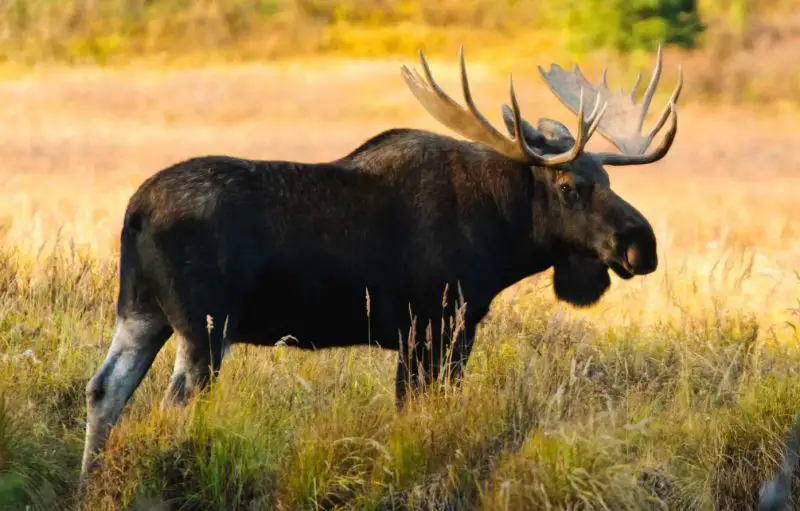
Identification and Appearance
The moose is the largest member of the deer family in Michigan and one of the most remarkable animals in North America. Adult bulls can weigh 900 to 1,200 pounds and stand nearly seven feet tall at the shoulder. Females, called cows, are slightly smaller.
Moose are dark brown to nearly black, with long faces, a humped back, and distinctive overhanging upper lips. Their long legs allow them to move easily through deep snow and wade into lakes and ponds to feed on aquatic vegetation. Males grow massive, flat, palm-shaped antlers that can span six feet across.
Habitat and Range in Michigan
Moose populations in Michigan are concentrated in the Upper Peninsula, especially in Marquette, Baraga, and Iron counties. Smaller groups also occur near the western Lake Superior region. They inhabit cold, wet forests with plenty of lakes, swamps, and young birch and aspen trees.
Moose prefer areas with dense cover but need access to open wetlands for feeding. The Michigan DNR closely monitors the population, which remains small — roughly between 300 and 500 individuals — and is classified as a species of special concern due to limited numbers and threats like disease and habitat loss.
Behavior and Diet
Moose are solitary animals, except during the breeding season in late September and early October. Bulls compete for cows through dramatic displays of strength, including antler clashes and deep grunting calls.
Their diet includes aquatic plants in summer and woody vegetation such as willow, birch, and aspen in winter. They can eat up to 60 pounds of vegetation per day. Despite their massive size, moose are surprisingly agile swimmers and are often seen cooling off or feeding in shallow lakes.
How to Identify Deer Species in Michigan
If you’re exploring Michigan’s wilderness, you can distinguish these three species by paying attention to size, coat color, antlers, and habitat.
Feature |
White-tailed Deer |
Elk |
Moose |
|---|---|---|---|
Size |
Medium (100–300 lbs) |
Large (400–900 lbs) |
Very large (900–1,200 lbs) |
Coat |
Brown to grayish |
Light brown with dark mane |
Dark brown to black |
Antlers |
Branched, slender |
Long, sweeping points |
Broad, flat, palm-shaped |
Tail |
White underside |
Short and light |
Very short |
Common Region |
Statewide |
Northern Lower Peninsula |
Upper Peninsula |
Learning these features makes wildlife watching in Michigan even more rewarding. Whether you spot a white-tailed deer grazing at the forest edge or a moose cooling off in a pond, every encounter offers a glimpse into the state’s natural beauty.
Conservation and Management of Deer in Michigan
Michigan’s Department of Natural Resources (DNR) manages deer and moose populations carefully to maintain ecological balance. The DNR regulates hunting seasons for white-tailed deer and elk, monitors population trends, and implements disease surveillance programs to prevent the spread of chronic wasting disease (CWD) and bovine tuberculosis.
- White-tailed deer are managed through seasonal hunting to prevent overpopulation and reduce vehicle collisions.
- Elk hunting is tightly controlled through a lottery-based permit system to maintain a healthy herd.
- Moose are fully protected and cannot be hunted, as their populations remain small and vulnerable.
Conservation programs also focus on habitat restoration, especially reforestation and wetland protection, which benefit all three species and many other forms of wildlife.
Deer Watching Tips in Michigan
Deer watching in Michigan is one of the most rewarding outdoor activities for nature enthusiasts. Whether you are a casual observer, a photographer, or a wildlife researcher, the state offers countless opportunities to see white-tailed deer, elk, and even moose in their natural habitats. To make your experience memorable and respectful of wildlife, it helps to know when, where, and how to observe them effectively.
Best Time of Year for Deer Watching
The most active periods for deer occur during early morning and late evening, especially from late summer through autumn. In September and October, both white-tailed deer and elk are in their rutting (mating) season. Bucks and bulls become more visible and active, making these months ideal for observation and photography.
In winter, deer often gather in sheltered areas called “deer yards,” while moose can sometimes be seen feeding near frozen lakes and wetlands. Spring is also a good season to spot does with their fawns as new life emerges across the forests.
Where to See Deer in Michigan
Michigan’s landscape offers excellent deer-watching destinations across both peninsulas.
- Pigeon River Country State Forest near Gaylord is Michigan’s premier elk-viewing location. Viewing areas and observation platforms are maintained specifically for visitors to safely watch herds during the rut.
- Tahquamenon Falls State Park in the Upper Peninsula is a favorite for spotting white-tailed deer and the occasional moose amid scenic waterfalls and dense forests.
- Seney National Wildlife Refuge offers boardwalks and observation routes that bring you close to deer habitats without disturbing the animals.
- Sleeping Bear Dunes National Lakeshore features dune forests and open meadows where deer often graze in the evening light.
- Huron-Manistee National Forests provide excellent opportunities to see deer throughout the year, especially in early mornings.
If you are lucky, you may even catch sight of moose along M-28 Highway near Newberry or in the Baraga Plains region, where these solitary giants occasionally appear.
Tips for Responsible and Successful Viewing
Observing deer responsibly ensures both safety and enjoyment. Follow these tips:
- Move quietly and wear neutral-colored clothing that blends with the environment.
- Use binoculars or a telephoto lens instead of approaching too closely.
- Avoid feeding deer, as this alters their natural behavior and can spread disease.
- Keep pets leashed or leave them at home to avoid startling wildlife.
- Visit during calm, cool mornings when deer are most active and visible.
- Stay downwind when possible to prevent deer from detecting your scent.
For photographers, early morning fog or the golden light before sunset provides stunning conditions to capture Michigan’s deer against a natural backdrop.
Deer Watching Etiquette
Respecting nature is essential when watching wildlife. Always remain on marked trails, avoid making loud noises, and give deer plenty of space. Disturbing deer during the breeding season or winter can stress them and impact their survival. Michigan’s natural beauty thrives when visitors follow the “Leave No Trace” principles — take only photos, and leave only footprints.
Deer Hunting in Michigan: Seasons and Regulations
Deer hunting has deep roots in Michigan’s culture and plays a vital role in wildlife conservation. Managed hunting helps maintain healthy deer populations, prevents overbrowsing, and funds habitat restoration projects through hunting license fees. Michigan offers a well-organized system of hunting seasons, permits, and zones that ensure sustainable management across the state.
Importance of Deer Hunting for Conservation
The Michigan Department of Natural Resources (DNR) uses hunting as a primary management tool to control white-tailed deer numbers. Without regulated hunting, deer populations could grow beyond the land’s carrying capacity, leading to habitat degradation, starvation, and increased vehicle collisions.
Funds collected from hunting licenses, tags, and equipment taxes contribute to the maintenance of state game areas, wildlife research, and conservation education programs. In short, ethical hunting directly supports Michigan’s natural ecosystems.
Deer Hunting Seasons in Michigan
Michigan’s deer hunting seasons vary by species, weapon type, and region. The following outlines the general framework for the white-tailed deer, the state’s primary game species:
- Archery Season: Typically runs from October 1 to November 14 and resumes from December 1 to January 1. Archery hunters enjoy a quieter experience and often target mature bucks.
- Firearm Season: Runs from November 15 to November 30 statewide. This is the most popular season, attracting hundreds of thousands of hunters each year.
- Muzzleloader Season: Occurs in December and provides a traditional hunting challenge using black powder firearms.
- Special Antlerless Firearm Seasons: Held in certain counties to manage population density, usually in late December or early January.
The elk hunting season in Michigan is by lottery only and limited to specific management units near the Pigeon River area. Moose hunting is prohibited since the population remains small and protected.
Hunting Zones and License Requirements
Michigan is divided into three main Deer Management Units (DMUs) — the Upper Peninsula, Northern Lower Peninsula, and Southern Lower Peninsula. Each region has unique regulations concerning bag limits, antler point restrictions, and hunting methods.
To hunt legally, residents and non-residents must obtain the appropriate licenses:
- Base License – Required for all hunters and serves as a prerequisite for other tags.
- Deer License or Combo License – Allows hunters to harvest one or two deer, depending on the type of license purchased.
- Antlerless License – Available for population control in specific areas.
Hunters must also follow tagging procedures immediately after harvest and report their kills online through the DNR’s electronic reporting system.
Safety and Ethical Practices
Safety and ethics are key principles of Michigan hunting culture. Hunters are encouraged to complete the state’s Hunter Safety Education Course before obtaining a license. Key safety measures include:
- Wearing hunter orange clothing during firearm season for visibility.
- Ensuring your firearm is unloaded while climbing or crossing obstacles.
- Knowing your target and what lies beyond before shooting.
- Respecting private property and obtaining permission before entering private land.
Ethical hunting means taking clean, humane shots, using all edible meat, and avoiding waste. Hunters also play a role in disease prevention by testing harvested deer for chronic wasting disease (CWD) and bovine tuberculosis (bTB) in designated zones.
Opportunities Beyond Hunting
Even if you are not a hunter, visiting during deer season offers insight into Michigan’s outdoor traditions. Many towns host deer festivals, conservation workshops, and local events celebrating the state’s hunting heritage. Hunters and wildlife enthusiasts share a common goal — protecting Michigan’s natural resources for future generations.
FAQs about Deer in Michigan
What is the most common deer in Michigan?
The white-tailed deer is the most common and widespread species, found across all regions of the state.
Are elk native to Michigan?
Yes, elk are native to Michigan but were once extirpated. They were successfully reintroduced in 1918 and now thrive in the northern Lower Peninsula.
Do moose still live in Michigan?
Yes, moose inhabit the Upper Peninsula, particularly in remote forested areas. Their population remains small but stable.
When is the best time to see elk in Michigan?
The best time to see elk is during September and October, when males bugle during the rutting season.
Can I hunt moose in Michigan?
No, moose hunting is not allowed in Michigan. They are protected due to their limited numbers.
Conclusion
Michigan is one of the few states where you can find three distinct members of the deer family living in the wild. From the familiar white-tailed deer to the mighty elk and the towering moose, these animals represent the strength and diversity of Michigan’s natural heritage.
Their presence reminds us of the importance of habitat protection, responsible wildlife management, and respect for nature. Whether you are a hunter, hiker, or wildlife photographer, encountering any of these species in the Michigan wilderness is an unforgettable experience.

